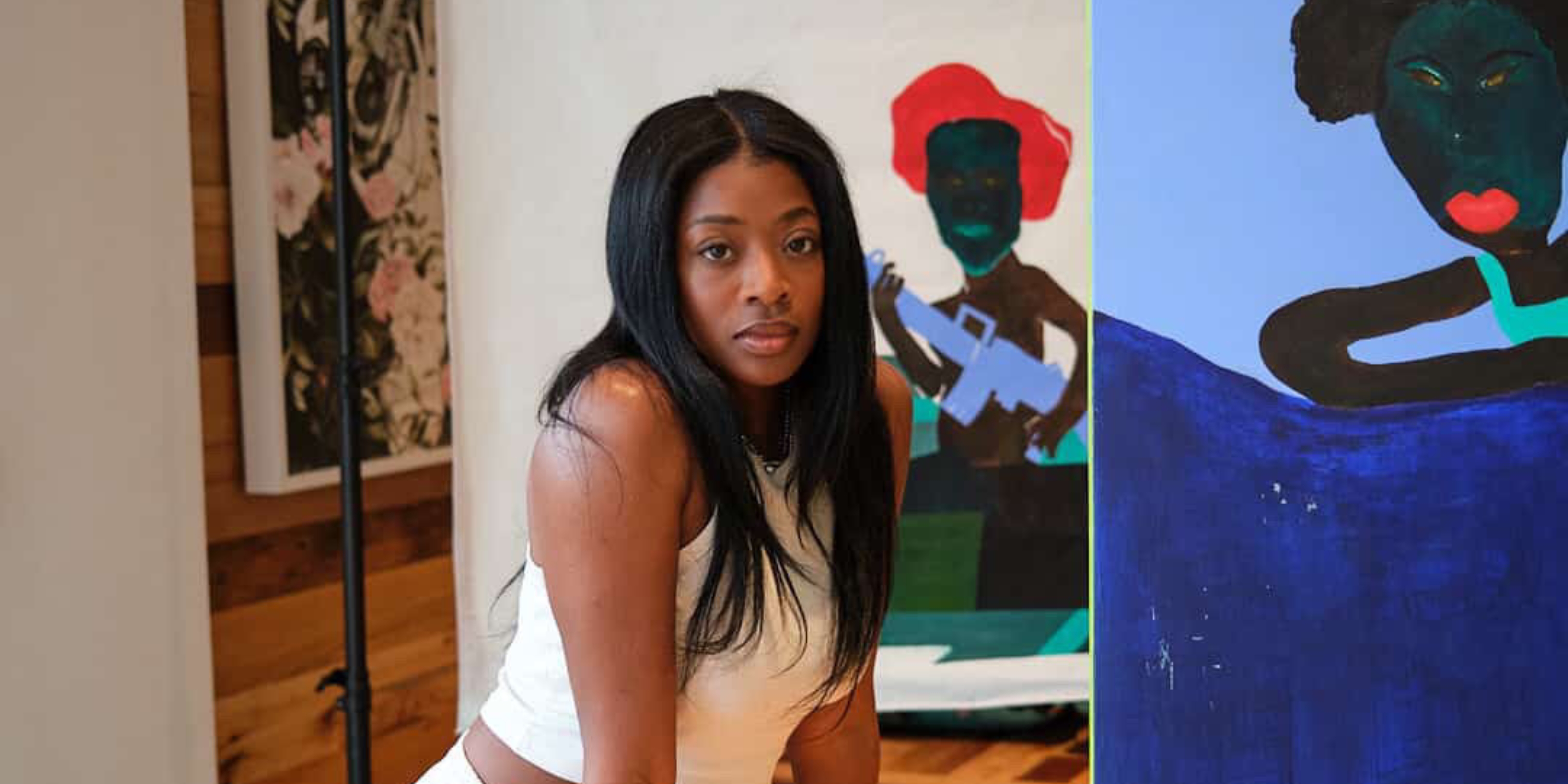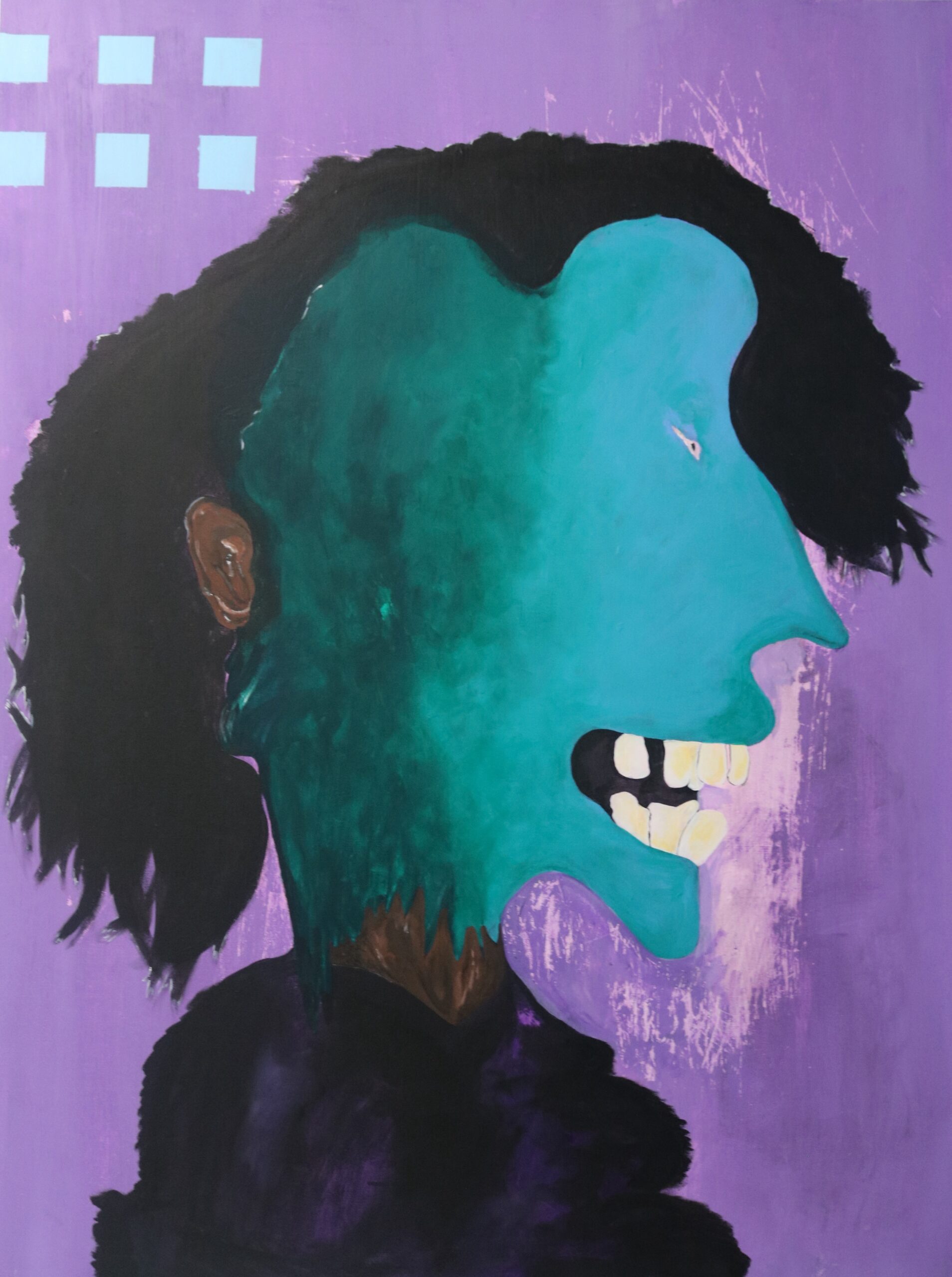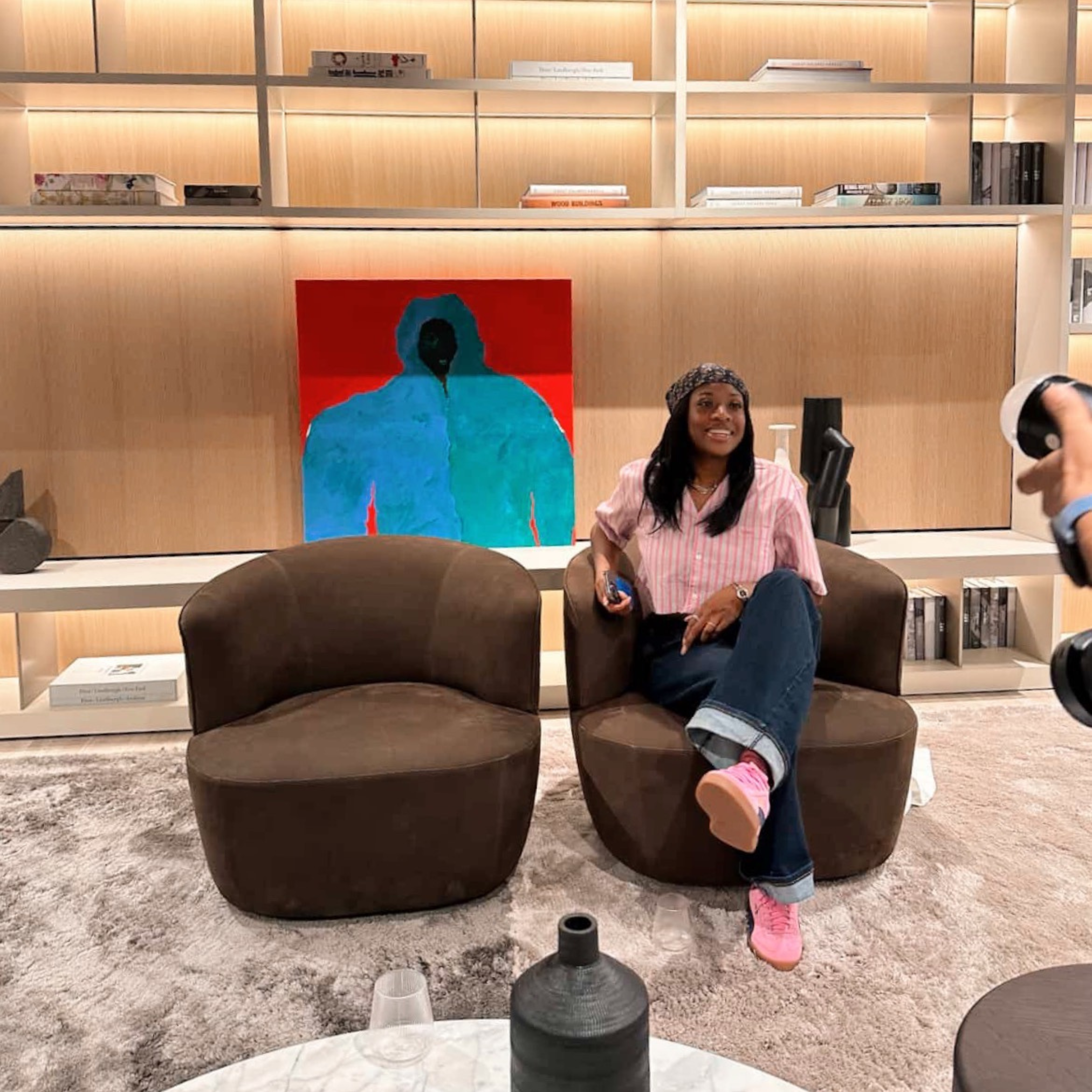Timea Faulkner
10/29/2025
•
5 min read

Walking through the Hammer’s biennial exhibition Made in L.A., curated by Essence Harden and Paulina Pobocha, I paused when I arrived at these pinwheel-like frames. Gravitating toward floral-shaped objects is almost instinctual for me. From trying to suck nectar from honeysuckle flowers to grabbing handfuls of sunflowers in the summers as a kid, the shapes are nostalgic.
These photo frames — pieces of someone else’s life — gave rise to that same nostalgia. Flashing back to the open field of pinwheels in Kansas City I saw on the cross-country drive from Maryland to L.A. with my mother, my mind connected Widline Cadet’s Shifting Skies (2025) to my own mental archive of memories and experiences I hold close. “When’s the last time I flipped through the family albums at my parents’ house?” I thought.
Cadet’s photographs became a time capsule taking me back to grabbing huge albums falling apart, photographs separated by endless pages with rectangular plastic slots, and negatives tucked into envelopes throughout the pages.
If we observe closely, art has a way of bringing up memories that are hardwired at the core of our being. Rising multidisciplinary artist Dandora Sillah has translated personal and emotional memories into visual storytelling through her artwork — work that also evokes a sense of connectedness to the memories, places, and experiences that resonate with us most.
Timea Faulkner: Walk us through your creative process. Are there any rituals, sounds, or visual references that ground your work?
Dandora Sillah: It often starts with something I notice in the world today. A moment or feeling can trigger a memory from years ago, or even connect me to something I've learned about the history of Sierra Leone. Sometimes what inspires a piece isn't something that happened to me personally, but something I witnessed or felt deeply. When that happens, the colors, smells, and emotions come rushing back, and I translate that energy into a visual story that bridges past and present. A moment will often take me back. Maybe something I see, hear, or feel that suddenly reminds me of a time in my life or someone close to me. From there, I start sketching what I remember, letting that image grow into a painting. If the memory feels blurry, I'll look at a reference just to capture the movement, but once I begin, I'm locked in. I don't need music or anything else around me. I'm completely present, having fun, and everything just starts to flow as the memory comes to life on the canvas.
Timea Faulkner: You often describe your work as rooted in your West African heritage and your experience growing up between cultures. When did you first begin to see those influences showing up in your art?
Dandora Sillah: I began to see those influences when I set out to paint a face that gradually became a mask. In that moment, I recognized the mask as a reflection of myself, shaped by living between my African and American identities. It revealed how I was often perceived through different lenses and guided me toward using art as a way to explore identity and belonging. Growing up in Brooklyn and being Sierra Leonean deeply shaped how I see the world. I went from attending a school where I was the only Black girl in my class to later being surrounded by many cultures; Jamaican, African, and all shades of brown. That shift opened my eyes to the beauty of diversity and helped me understand identity in a broader way. In Brooklyn, it was easier to tap into culture, and that sense of community and difference continues to influence how I translate my experiences into art.

Timea Faulkner: As an artist who works across painting and illustration, how do those mediums speak to each other in your process?
Dandora Sillah: Illustration is where the story begins for me. It helps me shape the narrative, the characters, and the meaning behind the work. Painting is where the feeling comes in. I love working with texture; it's what brings the story to life and gives the art emotion and depth. Together, they allow me to connect both storytelling and feeling in one piece.
Timea Faulkner: I’ve read that Delphine Adama Fawundu is an influence of yours. What about her work or approach speaks most to you?
Dandora Sillah: Delphine Adama Fawundu inspires me because she stays deeply connected to her culture and is intentional with texture and color. She travels to capture real experiences and references for her work, and watching her approach reminds me to stay committed, to keep exploring, and to let my own art grow with the same care and purpose.
Timea Faulkner: Are there other artists, mentors, or cultural figures who’ve shaped your artistic journey in unexpected ways?
Dandora Sillah: Yes! Mentors like Frances Fawundu, who is also an art therapist, has shaped my journey in unexpected ways, showing me how art can heal and connect people. Jacob Lawrence is another huge influence. His use of shape, color, and history, especially in depicting life during the Great Depression, inspires how I tell stories through my own work.
Timea Faulkner: Most recently, you participated in DC Design Week. The DMV has such a vibrant arts scene with strong diasporic roots. How has being part of this community shaped your practice or opportunities?

Dandora Sillah: I’ve lived in the DMV area for about ten years, even though I’m not originally from here. The area has become a part of me, and I’ve learned so much from its community. I work with children, creating art with them and sharing my own pieces to inspire their creativity. Participating in DC Design Week brought a strong sense of appreciation for my work, which motivates me to continue engaging with the community and expanding my presence here.
Timea Faulkner: As an emerging artist, when people encounter your work for the first time, what do you hope they walk away feeling or remembering?
Dandora Sillah: I hope people walk away understanding the story I'm telling. I hope they feel seen in their own experiences; whether it's being misunderstood, going against the grain, or being the "black sheep." Even if my work draws from specific cultures or memories, I want it to reach anyone who has ever felt different or out of place, to remind them that their experience matters and can be celebrated through art.
About the Artist
Dandora Sillah is a multidisciplinary artist based in the DMV area. Born in New Jersey and raised in Brooklyn by Sierra Leonean parents, her work is deeply rooted in her West African heritage and the experience of growing up between cultures. Through painting and illustration, she transforms memories of family, friends, and childhood into visual stories that explore identity, belonging, and the emotional landscapes of Black and immigrant life. Influenced by photographer Delphine Adama Fawundu, Dandora's practice reflects an ongoing dialogue between cultural memory and contemporary expression. Her work often weaves together personal narratives with elements of pop culture, highlighting how tradition and modern life intersect in shaping identity. She studied at Mercer County Community College before earning her degree in Graphic Design from Bowie State University. Her art serves as a visual archive; celebrating love, lineage, and the layered beauty of everyday existence.